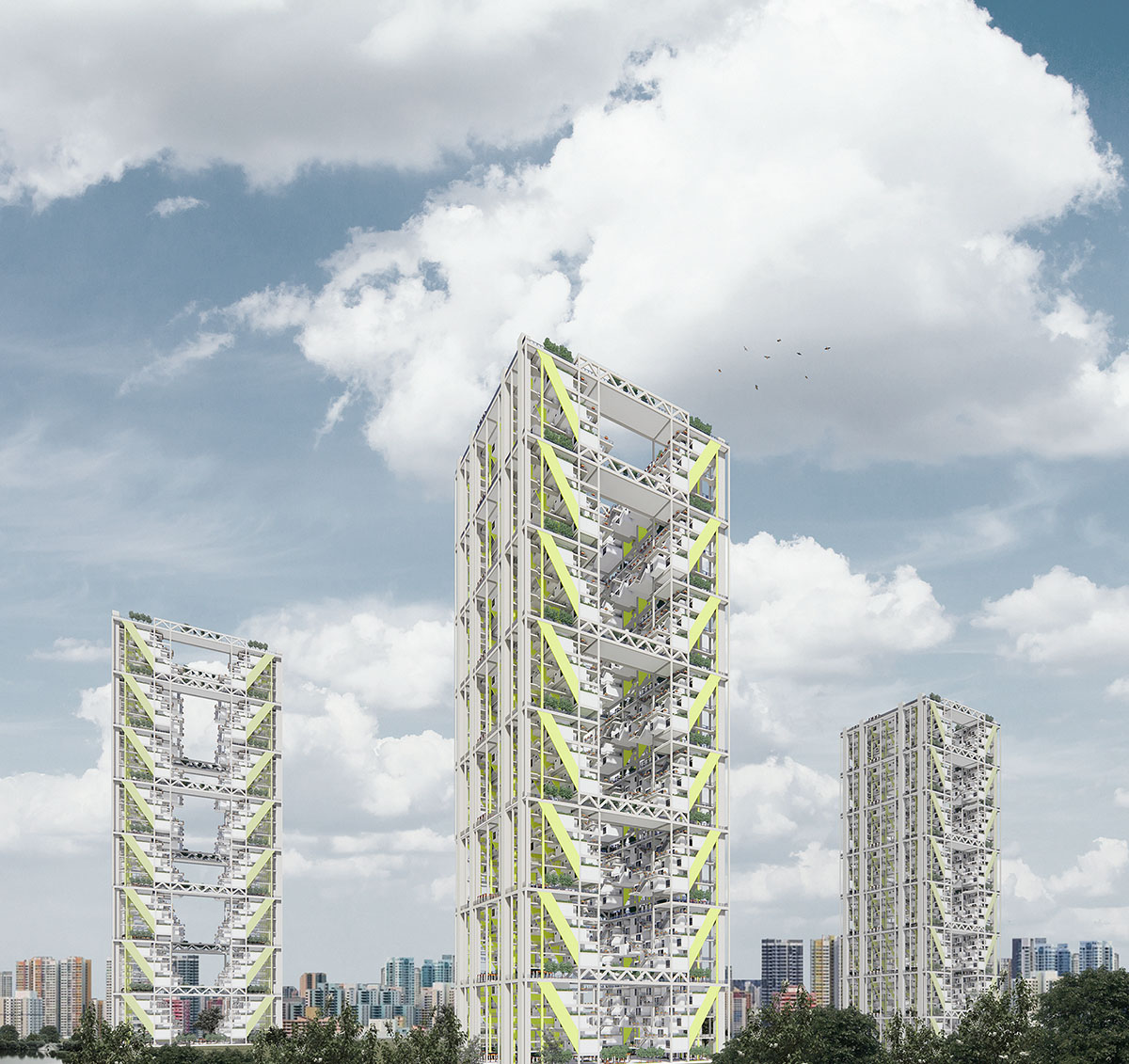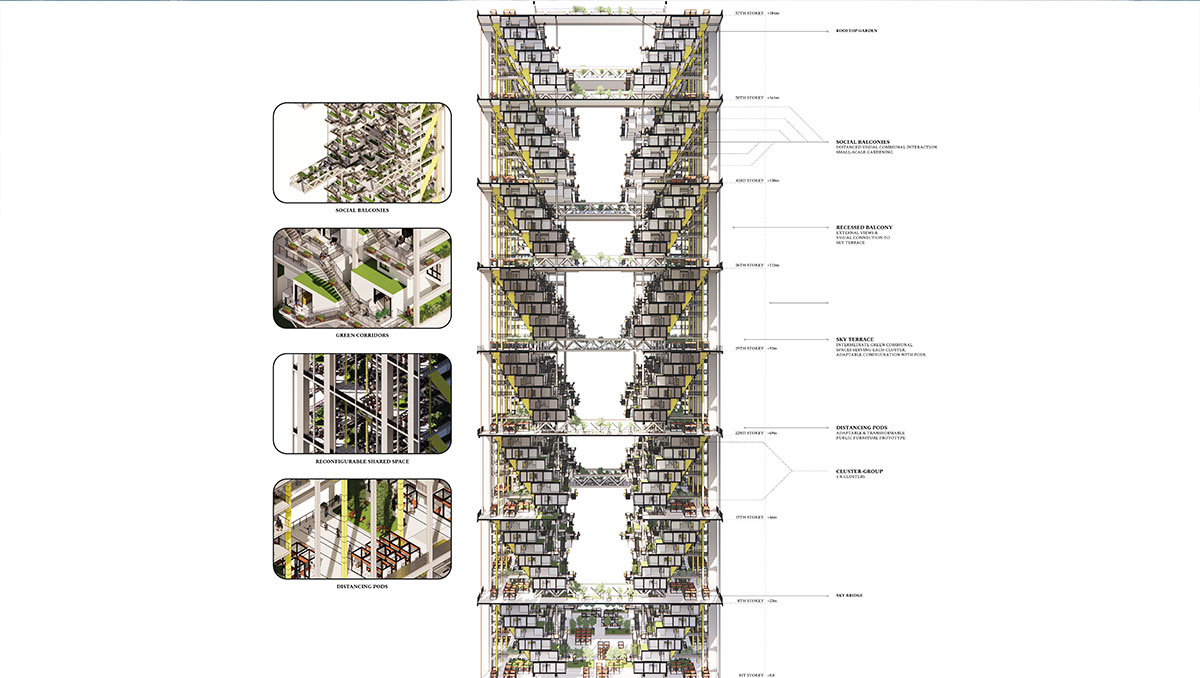
The COVID-19 pandemic has severely disrupted our lifestyles and reshaped our boundaries and territories, forcing us to retreat into our homes to live, work, play, learn, exercise and shop, all within the limited space. There is a sudden need for homes to serve multiple functions with the closure of most workplaces, gyms, schools, playgrounds and shops. Government regulations such as social distancing and stay home notice measures further restrict mobility and access to parks and recreational facilities, shrinking our worlds into our homes and their immediate vicinity.
Increased social isolation consequently causes profound mental stress and poorer well-being, which are compounded by the limitations of current housing design in supporting the new lifestyle. This presents an opportunity for an examination of existing residential designs for living in pandemic-stricken vertical cities.
This thesis project, titled “Isolate Together”, seeks to propose an alternative public housing design for the ‘new normal’ that provides more opportunities for distanced social interaction within a housing block, resolving the irony depicted in the title.
The design explores the potential of sky gardens and balconies in evolving the public housing design, while addressing the need for social distancing in communal spaces within the housing block. The vital need for well-ventilated spaces is another key issue that informs the design. Modularity in design is also essential for the public housing typology which will be exemplified in the overall design language.
The project introduces a new way of public housing living with a proposed system that segments the housing block for crowd-control and de-densification: the division into three scales – unit, cluster and block – enables the building to adapt to different pandemic phases as boundaries change over time, which allow residents access to green spaces and social interaction across pandemic phases. The thesis ultimately presents the potential of architectural design in providing pandemic-safe social spaces that can provide for social interaction and social distancing in the post-pandemic epoch.
